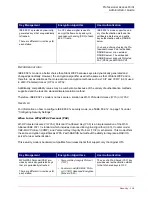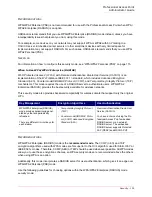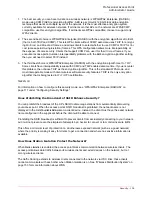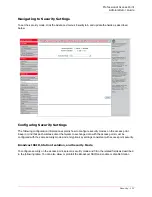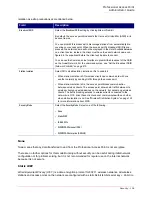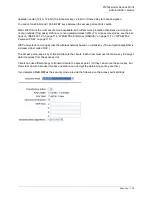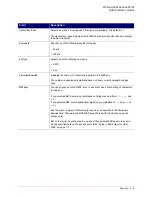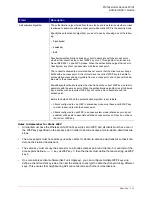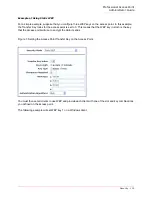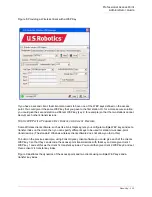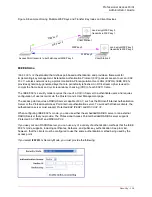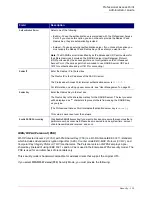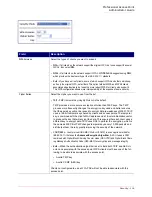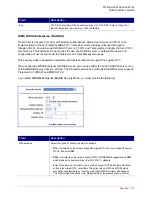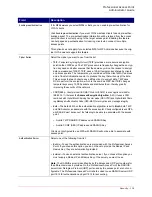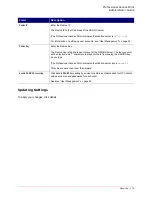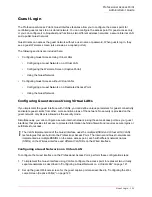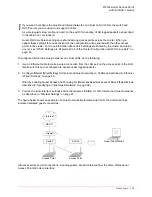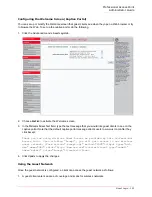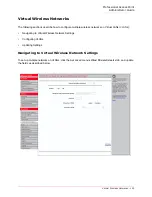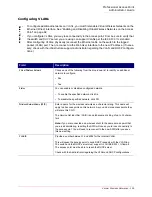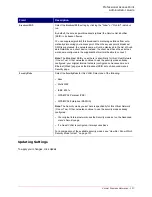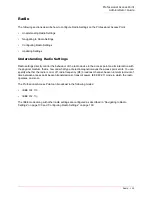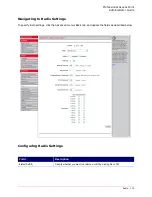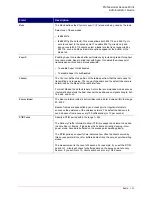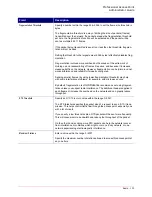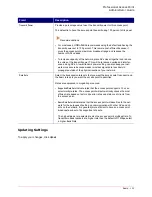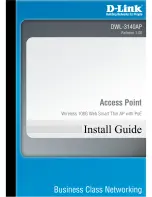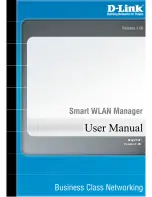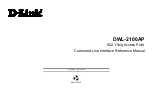
Professional Access Point
Administrator Guide
Security - 118
Enable pre-authentication
If for
WPA Versions
you select
WPA2
or
Both
, you can enable pre-authentication for
WPA2
clients.
Click
Enable pre-authentication
if you want
WPA2
wireless clients to send pre-authen-
tication packet. The pre-authentication information will be relayed from the access
point the client is currently using to the target access point. Enabling this feature
can help speed up authentication for roaming clients who connect to multiple
access points.
This option does not apply if you selected
WPA
for WPA Versions because the orig-
inal
WPA
does not support this feature.
Cipher Suites
Select the cipher you want to use from the list:
•
TKIP—
Temporal Key Integrity Protocol
(TKIP)
provides a more secure encryption
solution than WEP keys. The TKIP process more frequently changes the encryp-
tion key used and better ensures that the same key will not be reused to encrypt
data (a weakness of WEP). TKIP uses a 128-bit temporal key shared by clients
and access points. The temporal key is combined with the client's MAC address
and a 16-octet initialization vector to produce the key that will encrypt the data.
This ensures that each client uses a different key to encrypt data. TKIP uses
RC4 to perform the encryption, which is the same as WEP. But TKIP changes
temporal keys every 10,000 packets and distributes them, thereby greatly
improving the security of the network.
•
CCMP (AES
)—
Counter mode/CBC-MAC Protocol
(CCMP) is an encryption method for
IEEE
802.11i
that uses the
Advanced Encryption Algorithm
(
AES
). It uses a CCM
combined with Cipher Block Chaining Counter mode (CBC-CTR) and Cipher Block Chain-
ing Message Authentication Code (CBC-MAC) for encryption and message integrity.
•
Both
—The default. When the authentication algorithm is set to
Both
, both TKIP
and AES clients can associate with the access point. Clients configured to use WPA
with RADIUS must have one of the following to be able to associate with the access
point:
• A valid TKIP RADIUS IP address and RADIUS Key
• A valid CCMP (AES) IP address and RADIUS Key
Clients not configured to use WPA with RADIUS will not be able to associate with
access point.
Authentication Server
Select one of the following from list:
•
Built-in
—To use the authentication server provided with the Professional Access
Point. If you choose this option, you do not have to provide the Radius IP and
Radius Key; they are automatically provided.
•
External
—To use an external authentication server. If you choose this option you
must supply a Radius IP and Radius Key of the server you want to use.
Note:
The RADIUS server is identified by its IP address and UDP port numbers for
the different services it provides. On the Professional Access Point, the RADIUS
server User Datagram Protocol (UDP) ports used by the access point are not con-
figurable. The Professional Access Point is hard-coded to use RADIUS server UDP
port 1812 for authentication and port 1813 for accounting.
Field
Description
Summary of Contents for Instant802 APSDK
Page 1: ...Professional Access Point Administrator Guide R46 1224 00 rev 2 0 07 06...
Page 2: ......
Page 4: ...Professional Access Point Administrator Guide iv...
Page 8: ...Professional Access Point Administrator Guide viii...
Page 42: ...Professional Access Point Administrator Guide Basic Settings 42...
Page 52: ...Professional Access Point Administrator Guide Access Points 52...
Page 58: ...Professional Access Point Administrator Guide User Management 58...
Page 62: ...Professional Access Point Administrator Guide Sessions 62...
Page 70: ...Professional Access Point Administrator Guide Channel Management 70...
Page 88: ...Professional Access Point Administrator Guide Neighboring Access Points 88...
Page 96: ...Professional Access Point Administrator Guide Ethernet Wired Settings 96...
Page 120: ...Professional Access Point Administrator Guide Security 120...
Page 128: ...Professional Access Point Administrator Guide Virtual Wireless Networks 128...
Page 134: ...Professional Access Point Administrator Guide Radio 134...
Page 138: ...Professional Access Point Administrator Guide MAC Filtering 138...
Page 152: ...Professional Access Point Administrator Guide Quality of Service 152...
Page 160: ...Professional Access Point Administrator Guide Wireless Distribution System 160...
Page 164: ...Professional Access Point Administrator Guide Time Protocol 164...
Page 170: ...Professional Access Point Administrator Guide SNMP 170...
Page 290: ...Professional Access Point Administrator Guide Configuration Troubleshooting 290...
Page 298: ...Professional Access Point Administrator Guide Regulatory Information 298...
Page 328: ...Professional Access Point Administrator Guide Index 328...

